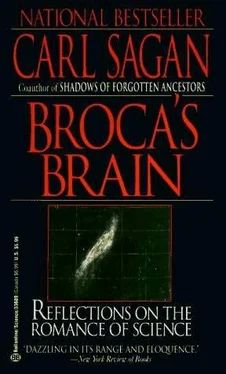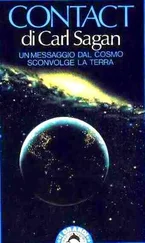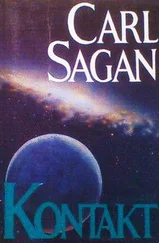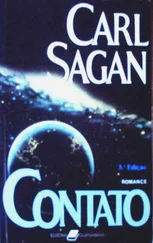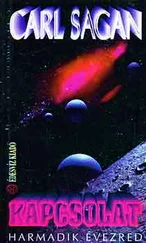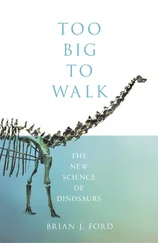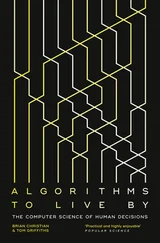Carl Sagan - Broca's Brain - The Romance of Science
Здесь есть возможность читать онлайн «Carl Sagan - Broca's Brain - The Romance of Science» весь текст электронной книги совершенно бесплатно (целиком полную версию без сокращений). В некоторых случаях можно слушать аудио, скачать через торрент в формате fb2 и присутствует краткое содержание. Жанр: Физика, на английском языке. Описание произведения, (предисловие) а так же отзывы посетителей доступны на портале библиотеки ЛибКат.
- Название:Broca's Brain: The Romance of Science
- Автор:
- Жанр:
- Год:неизвестен
- ISBN:нет данных
- Рейтинг книги:3 / 5. Голосов: 1
-
Избранное:Добавить в избранное
- Отзывы:
-
Ваша оценка:
- 60
- 1
- 2
- 3
- 4
- 5
Broca's Brain: The Romance of Science: краткое содержание, описание и аннотация
Предлагаем к чтению аннотацию, описание, краткое содержание или предисловие (зависит от того, что написал сам автор книги «Broca's Brain: The Romance of Science»). Если вы не нашли необходимую информацию о книге — напишите в комментариях, мы постараемся отыскать её.
Broca's Brain: The Romance of Science — читать онлайн бесплатно полную книгу (весь текст) целиком
Ниже представлен текст книги, разбитый по страницам. Система сохранения места последней прочитанной страницы, позволяет с удобством читать онлайн бесплатно книгу «Broca's Brain: The Romance of Science», без необходимости каждый раз заново искать на чём Вы остановились. Поставьте закладку, и сможете в любой момент перейти на страницу, на которой закончили чтение.
Интервал:
Закладка:
Advocates of ancient astronauts-the most notable being Erich von Däniken in his book Chariots of the Gods? -assert that there are numerous pieces of archaeological evidence that can be understood only by past contact by extraterrestrial civilizations with our ancestors. An iron pillar in India; a plaque in Palenque, Mexico; the pyramids of Egypt; the stone monoliths (all of which, according to Jacob Bronowski, resemble Benito Mussolini) on Easter Island; and the geometrical figures in Nazca, Peru, are all alleged to have been manufactured by or under the supervision of extraterrestrials. But in every case the artifacts in question have plausible and much simpler explanations. Our ancestors were no dummies. They may have lacked high technology, but they were as smart as we, and they sometimes combined dedication, intelligence and hard work to produce results that impress even us. The ancient-astronaut idea, interestingly, is popular among bureaucrats and politicians in the Soviet Union, perhaps because it preserves the old religious ideas in an acceptably modern scientific context. The most recent version of the ancient-astronaut story is the claim that the Dogon people in the Republic of Mali have an astronomical tradition concerning the star Sirius which they could only have acquired by contact with an alien civilization. This seems, in fact, to be the correct explanation, but it has nothing to do with astronauts, ancient or modern. (See Chapter 6.)
It is not surprising that pyramids have played a role in ancient-astronaut writings; ever since the Napoleonic invasions of Egypt impressed ancient Egyptian civilization on the consciousness of Europe, they have been the focus of a great deal of nonsense. Much has been written about supposed numerological information stored in the dimensions of the pyramids, especially the great pyramid of Gizeh, so that, for example, the ratio of height to width in certain units is said to be the time between Adam and Jesus in years. In one famous case a pyramidologist was observed filing a protuberance so that the observations and his speculations would be in better accord. The most recent manifestation of interest in pyramids is “pyranridology,” the contention that we and our razor blades feel better and last longer inside pyramids than we and they do inside cubes. Maybe. I find living in cubical dwellings depressing, and for most of our history human beings did not live in such quarters. But the contentions of pyramidology, under appropriately controlled conditions, have never been verified. Again, the burden of proof has not been met.
The Bermuda Triangle “mystery” has to do with unexplained disappearances of ships and airplanes in a vast region of the ocean around Bermuda. The most reasonable explanation for these disappearances (when they actually occur; many of the alleged disappearances turn out simply never to have happened) is that the vessels sank. I once objected on a television program that it seemed strange for ships and airplanes to disappear mysteriously but never trains; to which the host, Dick Cavett, replied, “I can see you’ve never waited for the Long Island Railroad.” As with the ancient-astronaut enthusiasts, the Bermuda Triangle advocates use sloppy scholarship and rhetorical questions. But they have not provided compelling evidence. They have not met the burden of proof.
Flying saucers, or UFOs, are well known to almost everyone. But seeing a strange light in the sky does not mean that we are being visited by beings from the planet Venus or a distant galaxy named Spectra. It might, for example, be an automobile headlight reflected off a high-altitude cloud, or a flight of luminescent insects, or an unconventional aircraft, or a conventional aircraft with unconventional lighting patterns, such as a high-intensity searchlight used for meteorological observations. There are also a number of cases-closer encounters with some highish index numeral-where one or two people claim to have been taken aboard an alien spaceship, prodded and probed with unconventional medical instruments, and released. But in these cases we have only the unsubstantiated testimony, no matter how heartfelt and seemingly sincere, of one or two people. To the best of my knowledge there are no instances out of the hundreds of thousands of UFO reports filed since 1947-not a single one-in which many people independently and reliably report a close encounter with what is clearly an alien spacecraft.
Not only is there an absence of good anecdotal evidence; there is no physical evidence either. Our laboratories are very sophisticated. A product of alien manufacture might readily be identified as such. Yet no one has ever turned up even a small fragment of an alien spacecraft that has passed any such physical test-much less the logbook of the starship captain. It is for these reasons that in 1977 NASA declined an invitation from the Executive Office of the President to undertake a serious investigation of UFO reports. When hoaxes and mere anecdotes are excluded, there seems to be nothing left to study.
Once I spied a bright, “hovering” UFO, and pointing it out to some friends in a restaurant, soon found myself in the midst of a throng of patrons, waitresses, cooks and proprietors milling about on the sidewalk, pointing up into the sky with fingers and forks, and making gasps of astonishment. People were somewhere between delighted and awestruck. But when I returned with a pair of binoculars which clearly showed the UFO to be an unconventional aircraft (a NASA weather airplane, as it later turned out), there was uniform disappointment. Some felt embarrassed at the public exposure of their credulity. Others were simply disappointed at the evaporation of a good story, something out of the ordinary-a visitor from another world.
In many such cases we are not unbiased observers. We have an emotional stake in the outcome-perhaps merely because the borderline belief system, if true, makes the world a more interesting place; but perhaps because there is something there that strikes more deeply into the human psyche. If astral projection actually occurs, then it is possible for some thinking and perceiving part of me to leave my body and effortlessly travel to other places-an exhilarating prospect. If spiritualism is real, then my soul will survive the death of my body-possibly a comforting thought. If there is extrasensory perception, then many of us possess latent talents that need only be tapped to make us more powerful than we are. If astrology is right, then our personalities and destinies are intimately tied to the rest of the cosmos. If elves and goblins and fairies truly exist (there is a lovely Victorian picture book showing photographs of six-inch-high undraped ladies with gossamer wings conversing with Victorian gentlemen), then the world is a more intriguing place than most adults have been led to believe. If we are now being or in historical times have been visited by representatives from advanced and benign extraterrestrial civilizations, perhaps the human predicament is not so dire as it seems; perhaps the extraterrestrials will save us from ourselves. But the fact that these propositions charm or stir us does not guarantee their truth. Their truth depends only on whether the evidence is compelling; and my own, and sometimes reluctant, judgment is that compelling evidence for these and many similar propositions simply does not (at least as yet) exist.
What is more, many of these doctrines, if false, are pernicious. In simplistic popular astrology we judge people by one of twelve character types depending on their month of birth. But if the typing is false, we do an injustice to the people we are typing. We place them in previously collected pigeonholes and do not judge them for themselves, a typing familiar in sexism and racism.
The interest in UFOs and ancient astronauts seems at least partly the result of unfulfilled religious needs. The extraterrestrials are often described as wise, powerful, benign, human in appearance, and sometimes they are attired in long white robes. They are very much like gods and angels, coming from other planets rather than from heaven, using spaceships rather than wings. There is a little pseudoscientific overlay, but the theological antecedents are clear: in many cases the supposed ancient astronauts and UFO occupants are deities, feebly disguised and modernized, but easily recognizable. Indeed, a recent British survey suggests that more people believe in extraterrestrial visitations than in God.
Читать дальшеИнтервал:
Закладка:
Похожие книги на «Broca's Brain: The Romance of Science»
Представляем Вашему вниманию похожие книги на «Broca's Brain: The Romance of Science» списком для выбора. Мы отобрали схожую по названию и смыслу литературу в надежде предоставить читателям больше вариантов отыскать новые, интересные, ещё непрочитанные произведения.
Обсуждение, отзывы о книге «Broca's Brain: The Romance of Science» и просто собственные мнения читателей. Оставьте ваши комментарии, напишите, что Вы думаете о произведении, его смысле или главных героях. Укажите что конкретно понравилось, а что нет, и почему Вы так считаете.
